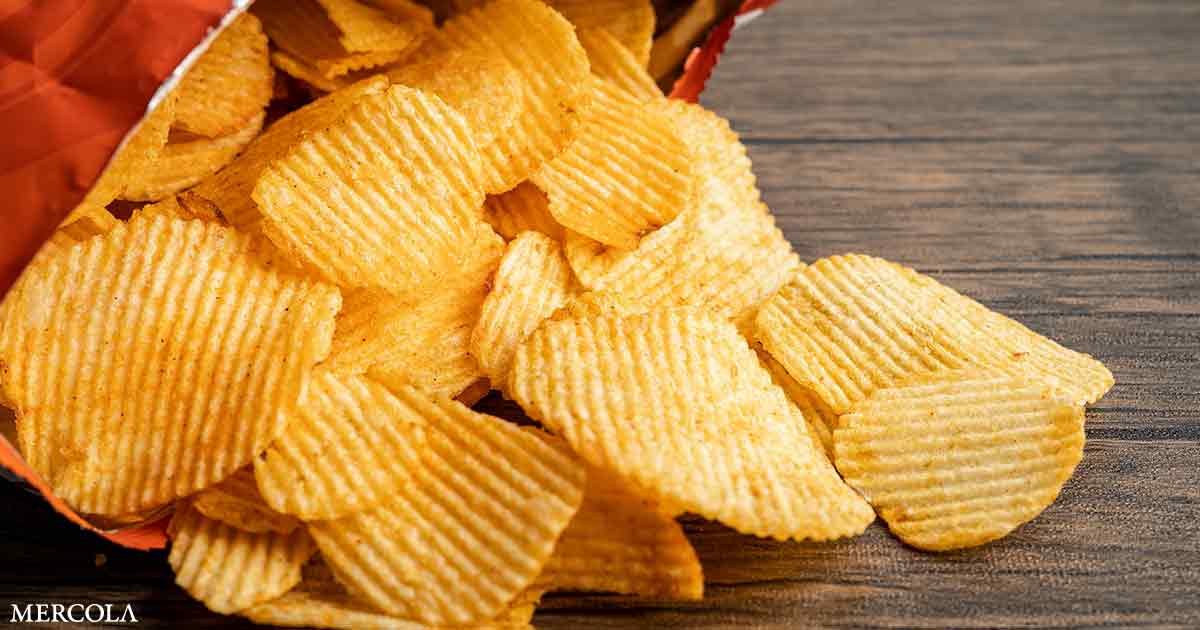In recent years, the prevalence of autism spectrum disorder (ASD) has risen dramatically, leaving researchers and parents alike searching for answers. While the exact causes remain elusive, emerging evidence points to an unexpected culprit: the fats we eat.
A groundbreaking study has uncovered a potential link between polyunsaturated fatty acids (PUFAs) in our diets and the development of autism. This discovery not only sheds light on the possible origins of ASD but also raises important questions about the long-term effects of our modern dietary habits.
The Changing Face of Autism
To understand the significance of this research, we must first look at how our understanding and recognition of autism have evolved over time. In the 1950s, autism was barely on the medical radar. It wasn’t until the early 1960s that pioneers like Leo Kanner and Hans Asperger brought autism into the spotlight as a distinct condition.
The first prevalence studies, conducted in the 1960s and 1970s, painted a very different picture from what we see today. Back then, autism was estimated to affect just 2 to 4 cases per 10,000 children.1 Fast forward to the present day, and the numbers are staggering. Current estimates suggest that about 1 in 36 children in the U.S. is identified with ASD2 — a dramatic increase that cannot be explained by improved diagnosis alone.
This surge in autism rates has coincided with significant changes in our dietary patterns, particularly in the types of fats we consume. Could there be a connection?
The PUFA Problem
At the heart of this potential link are polyunsaturated fatty acids, or PUFAs. These are a type of fat found in many foods, particularly vegetable (seed) oils, certain seeds and nuts, and even in the meat of animals fed high-PUFA diets. High-PUFA diets can interfere with thyroid hormone utilization and impair gut health, contributing to inflammation and metabolic issues. (As discussed in my previous article, here.)
The study in question made a startling discovery: the presence of metabolic byproducts of PUFA breakdown in the umbilical cord fluid was linked to severity of autism symptoms in children.3 In other words, the waste products created when our bodies process PUFAs may be negatively impacting the neurodevelopment of children, even before they’re born.
This isn’t entirely new information in the scientific community. Similar results have been observed in mice, but this study marks one of the first times these findings have been confirmed in humans. It’s a crucial step in understanding the potential risks associated with our modern diets.
The Dietary Shift
To fully grasp the implications of this research, we need to look at how our diets have changed over the past century. In the early 1900s, the average person’s fat intake looked very different from what it does today. Animal fats like tallow, lard, butter, and eggs were dietary staples. Vegetable oils, now ubiquitous in processed foods and cooking, simply didn’t exist in the human diet.
Today, we’ve seen a massive shift towards consuming more PUFAs and fewer saturated fats. This change is particularly pronounced in the consumption of linoleic acid (LA), an omega-6 PUFA that’s abundant in vegetable oils. Prior to the 20th century, LA made up less than 2% of total daily caloric intake. Now, it accounts for over 25% of total calories for the average person4 — a more than tenfold increase!
This dietary revolution hasn’t been limited to humans. The animals we eat, particularly chickens and pigs, are now often raised on high-PUFA feed in confinement barns. As a result, chicken has become the highest source of linoleic acid consumption in the United States.5 We’re not just changing our own diets; we’re changing the nutritional profile of our entire food chain.
The Science Behind the Link
In this research paper, levels of diHETrE in umbilical cord fluid significantly impacted ASD symptoms in children and were associated with impaired adaptive functioning. What is diHETrE and how does that relate to PUFA intake? To understand how PUFAs might influence autism development, we need to briefly delve into some biochemistry.
When we consume PUFAs, our bodies break them down through a complex process involving digestion, absorption, and metabolism. To simplify this discussion, let’s focus on Linoleic Acid (LA) intake, which is an omega-6 that is high in vegetable (seed) oils, some seeds and nuts, and the fat of chickens and pigs fed a diet high in LA.
Some of the LA we consume is used directly for energy or as structural components in our bodies. The rest is converted into a compound called Arachidonic Acid (AA) through a series of chemical reactions.
AA can then be further transformed into other bioactive molecules called eicosanoids. Eicosanoids are a broad class of signaling molecules that play crucial roles in inflammation, pain perception, and other physiological processes. They’re formed through two main pathways:
1. The Cyclooxygenase (COX) pathway — Here, AA is converted by COX enzymes into various eicosanoids like prostaglandins and thromboxanes.
2. The Lipoxygenase (LOX) pathway — In this route, AA is transformed by lipoxygenase enzymes into other eicosanoids such as leukotrienes and lipoxins.
Once formed, these eicosanoids act locally on nearby cells, modulating various physiological processes. The key point here is that eicosanoids are primarily derived from PUFAs. The more PUFAs we consume, the more eicosanoids our bodies produce.
COX and LOX enzymes work through oxidation processes. The multiple double bonds in PUFAs create points of unsaturation that are reactive and can be easily oxidized by COX and LOX enzymes. These unsaturated sites are crucial for the enzymes to introduce oxygen and form the bioactive eicosanoids.
Saturated fatty acids lack double bonds in their carbon chains, making them less reactive and unsuitable substrates for the COX and LOX enzymes. The absence of double bonds means that there are no reactive sites for the introduction of oxygen. Thus, COX and LOX enzymes cannot act on saturated fats to produce eicosanoids.

Just another reason why the TYPES of fat we eat matter — they not only serve roles for energy and structure, but they also play a very important role in signaling and physiological functions. Eicosanoids are primarily derived from PUFAs. So, the less PUFA we eat, the less eicosanoids there will be around the body.
The Smoking Gun: diHETrE
The study that uncovered the link between PUFAs and autism severity found elevated levels of a specific eicosanoid called diHETrE in umbilical cord blood. DiHETrE is derived from AA and has known inflammatory properties. Its production involves the action of LOX enzymes, which introduce hydroxyl groups into the fatty acid chain.
While we do consume small amounts of AA directly in our diets, the vast majority comes from the conversion of dietary LA. This means that increased intake of LA can lead to higher levels of AA, as more raw material is available for conversion.
The study’s conclusions were striking: “Specifically, high levels of AA-derived diols in cord blood, including total diHETrE, 11,12-diHETrE, and 14,15-diHETrE, were found to impact ASD symptom severity significantly. At high levels of 11,12-diHETrE, it was associated with SA disability … Based on these findings, AA-derived metabolites in cord blood may influence subsequent neurodevelopment in children.”
These findings suggest that the presence of PUFA metabolites (which rise through higher consumption of dietary PUFAs) during the fetal period may influence the development of ASD symptoms through inflammatory cytokines.

Beyond Autism: The Broader Impact
While this study focused on autism, it’s important to note that the potential negative effects of high-PUFA intake extend beyond ASD.
Another study investigating umbilical cord fluid found that elevated levels of AA were linked to higher ADHD symptom scores during childhood.6 Further, maternal diets high in omega-6s increases ADHD risk in the child.7,8
High omega-6 diets in mothers have also been associated with increased risk of cognitive impairments in their children.9,10 These findings collectively support the “fetal origins of disease” concept, which suggests that altered nutrition in early life can lead to disease development later on.
This is particularly relevant to central nervous system (CNS) development, as “the developing CNS is particularly vulnerable during intrauterine development to metabolic compromise given the exceptional energy demands of its many cell types that are being generated (including neurons, astroglia, microglia, oligodendroglia, vasculature), their protracted movements (migration), morphogenesis, and assembly into functional circuits.
Thus, disruption of these processes by environmental factors will likely provoke long-lived modifications to brain structure and, ultimately, function”.11
The Generational Impact
Perhaps one of the most concerning aspects of this dietary shift is its potential to affect multiple generations. And this impacts the child’s development after birth as well, as the fatty acid composition of breast milk has drastically changed in parallel with changes in dietary fats.
As Dr. Mercola’s review paper on LA12 notes: “A seminal study conducted in 1959 [27] provided lactating women with a high-LA diet consisting of fats from lard, corn oil, or linseed oil, which approximated the LA content of the standard American diet, with approximately 15% to 30% of total calories coming from LA.
Within 2 to 3 days of changing their usual diet to the high-LA diet, the amounts of LA in their breast milk increased from 8% to 10% to 42%. The study highlights that the LA content of breast milk has significantly increased in human breast milk due primarily to marked changes in the nature of the fats consumed.”
This rapid change in breast milk composition means that infants are now being exposed to significantly higher levels of LA from their very first meals. The dietary shifts we’ve made aren’t just affecting us; they’re changing the nutritional landscape for generations to come.
The Path Forward
Given the mounting evidence of potential harm from excessive PUFA consumption, particularly in the context of fetal and early childhood development, what can be done?
1. Return to traditional fats — One obvious step is to shift back towards more traditional fat sources that are richer in saturated fats and lower in PUFAs. In the 1800s, fats consumed in the diet included animal fats like tallow, lard, eggs and butter.13
Vegetable (seed) oils did not exist at this time for humans or animals! We need to go back to consuming traditional fats which were richer in saturated fat and lower in PUFAs. Limiting consumption of vegetable (seed oils), nuts and seeds, plus fattier cuts of meats from chickens and pigs fed a high-PUFA diet will help lower your total PUFA intake.
2. Educate and raise awareness — Many people are unaware of the dramatic changes in our dietary fat consumption over the past century. Educating the public, friends and family about these changes and their potential impacts is crucial.
3. Reconsider prenatal nutrition advice — Given the potential impact of maternal diet on fetal development, a renewed focus on prenatal nutrition that takes these findings into account is warranted.
In fact, the USDA ‘Tips for Pregnant Moms’ document currently states: “Choose vegetable oils instead of butter.”14
Conclusion
It’s important to note that the link between PUFAs and autism is not without controversy. The dramatic increase in autism rates over the past few decades is likely multifactorial, with potential contributors including improved diagnosis, changes in diagnostic criteria, environmental factors, and genetic influences.
However, in the face of rising rates of neurodevelopmental disorders, every potential contributing factor must be carefully examined. The link between PUFAs and autism development may prove to be a crucial piece of the puzzle, opening up new avenues for prevention and intervention.
Ultimately, this research serves as a reminder of the profound impact our dietary choices can have, not just on our own health, but on the health and development of future generations.
About the Author
Ashley Armstrong is the cofounder of Angel Acres Egg Co., which specializes in low-PUFA (polyunsaturated fat) eggs that are shipped to all 50 states (join waitlist here), and Nourish Cooperative, which ships low-PUFA pork, beef, cheese, A2 dairy and traditional sourdough to all 50 states. Waitlists will reopen shortly.


